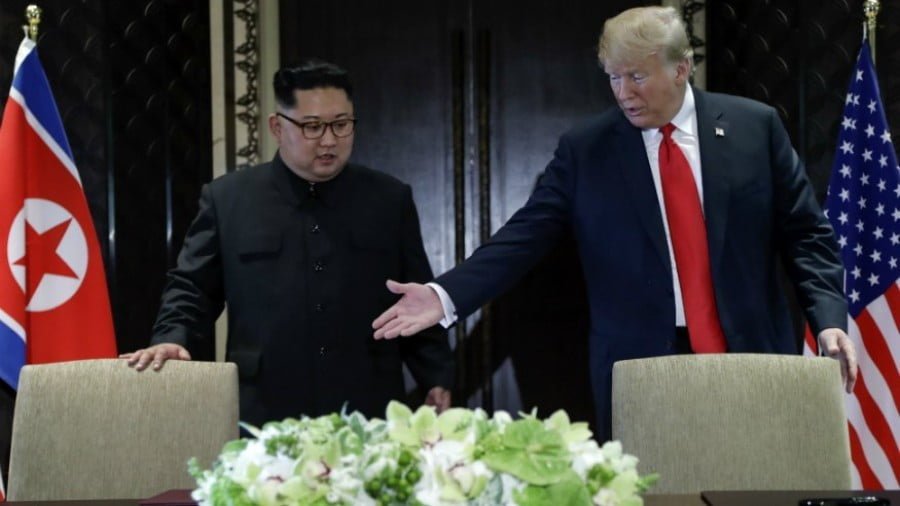Trump and the War in Afghanistan
Afghanistan is America’s longest war, and it seems it could go on indefinitely. President Trump has said he ‘will pursue a new foreign policy that finally learns from the mistakes of the past’ but has inherited a blunder that he is going to find very difficult to rectify. The situation in Afghanistan is dire to the point of disaster, but Mr Trump’s intentions are not yet clear. It is difficult, however, to imagine him approving negotiations with the Taliban.
The US Special Inspector General for Afghanistan Reconstruction, Mr John Sopko, recently reported that «Afghanistan needs a stable security environment to prevent it from again becoming a safe haven for al-Qaeda or other terrorists. More than half of US reconstruction dollars since 2002 have gone toward building, equipping, training, and sustaining the Afghan National Defense and Security Forces (ANDSF). However, the ANDSF have not yet been capable of securing all of Afghanistan and have lost territory to the insurgency».
The ‘reconstruction dollars’ noted by Mr Sopko total a mind-boggling $115 billion, a figure most of us are incapable of comprehending. One way of understanding just how much this is, in a historical setting, might be to consider that the entire 1948-1952 Marshall Plan, the US initiative for reconstruction of the whole of Western Europe following the devastation of World War Two, cost $103 billion in current dollar value. The tiny country of Afghanistan has swallowed up even more but remains a disaster area. Of major relevance is that Transparency International places Afghanistan 166 of 168 in its Corruption Index and notes that ‘an eighth of all the money that goes to Afghanistan is lost to corruption».
In Mr Sopko’s words, «the United States contributed significantly to the problems in Afghanistan by dumping too much money, too quickly, into too small an economy, with too little oversight. Poor understanding of Afghan political and social realities led to unrealistic timelines and false assumptions about what was possible».
The SIGAR’s critical summation is too kind. It has to be faced that after the United States invaded Afghanistan in 2001 it engaged in a full-out war, thereby alienating millions of Afghans simply because the Pentagon had no understanding whatever of the country’s ‘political and social realities.’ (Some of the troops on the ground tried hard to become involved in local realities but got nowhere because they were there for far too short a time, and their generals wanted victory, not social understanding.)
The US-NATO military alliance directed the war from 2003 to 2014 when it was announced that its combat operations would cease and the US would leave a residual force until the end of 2016 (now extended). Some thousands of US soldiers, under the ‘Freedom’s Sentinel’ Mission, continue combat operations but other foreign contingents are confined to training and advising the Afghan army.
In an election speech in 2008 Mr Obama declared he would ‘make the fight against al Qaeda and the Taliban the top priority that it should be. This is a war that we have to win.’ But the war had already been lost. Then in 2013 he said that withdrawal of US forces was possible because ‘we achieved our central goal, or have come very close, which is to de-capacitate al-Qaeda, to dismantle them, to make sure that they can’t attack us again.’
This was wilfully ignoring reality, because the country was already lurching towards civil war, with disparate bands of insurrectionists creating mayhem while so many people in and connected to the Kabul government played politics, acquired vast sums of money, and bought expensive mansions in Dubai. It was hoped, against all evidence, that the Afghan police and army would be able to defeat the Taliban and other insurgents, but this has not happened, and US combat forces have ramped up their operations, few of which are revealed to the public unless there is a disaster that cannot be denied or concealed.
The sad fact is that foreign meddling in Afghanistan has been catastrophic and the place is verging on anarchy, while masses of money continue to be poured into the place, especially by the United States. This doesn’t make sense, and President Trump has made it clear he wants to cease wasteful expenditure. This is the man, after all, who made a campaign speech declaring that ‘the people opposing us are the same people — and think of this — who’ve wasted $6 trillion on wars in the Middle East — we could have rebuilt our country twice — that have produced only more terrorism, more death, and more suffering – imagine if that money had been spent at home.’
Trump is right about the waste (although the figure of $6 trillion is suspect), and if he were to stick to that view, then he would immediately turn off Washington’s Afghanistan money tap which is scheduled to pour out another 4.6 billion dollars in 2017.
But will the new President just abandon Afghanistan?
The research agency Stratfor noted that before his bid for the presidency, ‘Trump released a video arguing that the United States’ decision to invade Afghanistan was a mistake and that its troops should withdraw. He stuck to a modified version of this view throughout the campaign season, presenting himself as a can-do technocrat with zero tolerance for waste.’
If the Taliban take over Afghanistan it is most unlikely there would be any direct threat to the United States. Life would be hell for ordinary citizens, but since when has Washington worried about such things? It has supported rebellions and coups in Libya, Syria and Ukraine, and none of these has resulted in a better life for ordinary citizens. President Trump declared that ‘From this day forward, it’s going to be only America first. America first… we’ve defended other nation’s borders while refusing to defend our own; and spent trillions of dollars overseas while America’s infrastructure has fallen into disrepair and decay.’ But will he really ‘learn from the mistakes of the past’?
His promise appears indicative of intention to avoid further expensive catastrophes such as have been visited on Afghanistan, Iraq and Libya — although he did take time, during an Inauguration ball in Washington, to speak by video link to US troops in Afghanistan and tell them that ‘I’m with you all the way… we’re going to do it together.’ This was certainly a thoughtful public relations gesture — but was far from being assurance that the Trumpian United States would remain committed, militarily or financially, to Afghanistan’s future.
It is probable that his final decision will rest on discussions with the trio of generals he has appointed to be close associates. Generals Mattis, the Secretary of Defence; Kelly, the Secretary of Homeland Security; and Flynn, National Security Adviser, are not people who are disinclined to present their views forthrightly. Nor are they reluctant to wage war.
So : economic, social and military disaster as it is, we might expect the US war in Afghanistan to continue. And few things would give me more pleasure than to be completely wrong about such a dismal forecast.
By Brian Cloughley
Source: Strategic Culture







